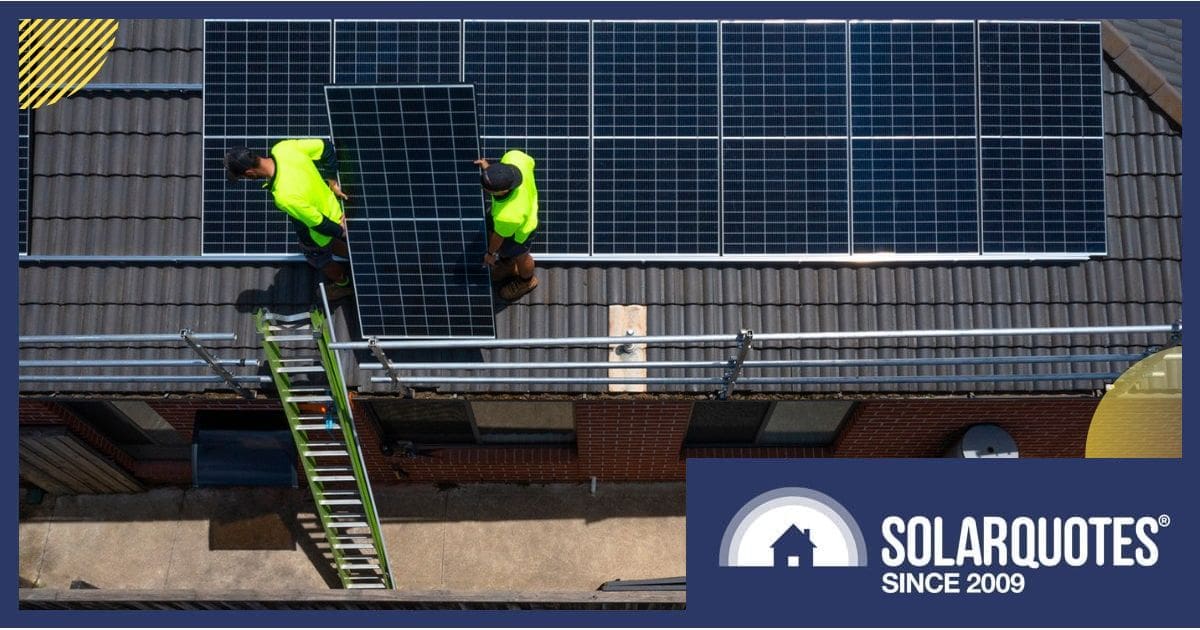
350,000 solar panel, hot water, and battery systems have been installed with the support of rebates and interest-free loans under Victoria’s Solar Homes program says the Allan Labor Government.
Launched in 2018, the $1.3 billion program is being run over 10 years and is responsible for 13 per cent of total renewable energy capacity installed in the state currently. Other achievements of the program to date include:
- Delivering 2 gigawatts of capacity.
- A cumulative 6.5 gigawatt-hours of energy1 generated by solar panels installed under the program. ADDED: A commenter has pointed out (and I should have spotted it from the get-go as it’s a rookie error) that the amount of energy generated doesn’t match up to the capacity installed – it should be far higher. I’ve contacted the Victorian Government for a clarification/correction.
- Solar is now installed on 30 per cent of Victorian homes, up from 14 per cent prior to the program’s commencement.
- Supporting 5,500 jobs.
- Delivering free up-skilling training to plumbers and electricians.
“We’re putting money back in the pockets of Victorians – helping save hundreds of thousands of families millions of dollars every year,” said Victorian Premier Jacinta Allan.
According to the announcement, families to have benefited are collectively saving $279 million annually off their energy bills.
Some Melbourne suburbs are seeing much higher saturation rates than the state average; with Tarneit, Truganina, Werribee and Hoppers Crossing said to have more than 44% of homes with solar installed.
“Melbourne’s west is proud to top the state in rooftop solar installations, powering our state’s renewables revolution,” said Member for Laverton Sarah Connolly.
In the state’s regions, Mildura and Shepparton lead in uptake, followed by Wodonga, Wangaratta and Wallan.
Program’s Popularity Endures
While experiencing its share of challenges, particularly in earlier years, the program continues to be embraced by Victorians. The State Government says the last year has been the biggest for the initiative. In July alone there were 7,873 approved applications; among which were 4,435 successful applications for rooftop solar and 3,125 solar hot water approvals.
“Our popular Solar Homes program is delivering cheaper renewable energy – slashing power bills and slashing emissions,” said Victorian Minister for Energy Lily D’Ambrosio.
Solar Homes Incentives Currently On Offer
The centrepiece of the program is the Victorian solar panel rebate, which offers a subsidy of up to $1,400 and a further $1,400 interest-free loan option. Victorians can double-dip, taking advantage of the national solar rebate as well.
For home energy storage, there’s an interest-free loan of up to $8,800 for the installation of a solar battery system; repaid monthly over 4 years. In total, 2,000 home battery loan applications had been approved by June this year. At the time of writing, there were 1,905 interest-free loans left for the 2024/25 financial year.
Also available is a rebate of up to $1,000 to replace an existing hot water system with an eligible heat pump or solar hot water system – but note if a property has already received a battery (or hot water) rebate, it won’t be eligible for this.
For eligible rental providers/landlords, they can score a rebate of up to $1,400 for the installation of solar PV systems on a maximum of two rental properties each financial year. There’s also a rebate of up to $1,400 per tenancy for not-for-profit community housing organisations (CHOs). More than 1,000 tenancies have benefited from this incentive so far.
Overseeing the program is Solar Victoria, which is also administering other initiatives including the Solar for Apartments program. This provides funding of up to $2,800 per apartment to install PV. Round 2 of the program kicks off sometime this month.
Footnotes
- Announcement states “power”, but gigawatt-hours is a measure of energy. Learn about the difference between power and energy. ↩

 RSS - Posts
RSS - Posts



2 gigawatts of capacity and 6.5 gigawatt-hours of energy.
Does that amount to 3.25 hours of electricity?
It might be worth contacting the publisher for a bit of a fact check. It is a government praising itself after all.
Thanks for flagging that, I really should have tweaked to it when writing the article. I’ll look into it.
Isn’t the popular program the cause for Jemena now requiring every Victorian solar system to have a Emergency Backstop Mechanism?
Hi Brian,
It’s only new systems that will need the emergency backstop applied. Flexible exports is where we’re all headed.